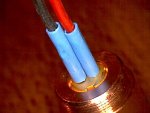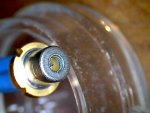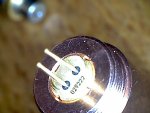reloader45
Active member
- Joined
- Mar 17, 2019
- Messages
- 172
- Points
- 28
Hello,
today I got two sharp laser diodes
Sharp GH0631IA2G 185mW 638nm Laser Diode
from DTR.
I pressed one into a 12 mm Copper heatsink from DTR and connected it to a brand new 500 mW driver from X-wossee.
Nothing happened! No current, no laser light. After that, I connected the diode direct to a power supply, set to 100 mA. There was only a little red glow. After raising the current to 280 mA,m the output was under 1 mW.
The same thing with the other diode. The result, 75€ blown in the wind. I also checked the data sheet of this diodes. They should have a normal polarity.
I am really confused what happend. Next time I will connect new diodes first to a LM317 laser driver, they are more robust than this expensive laser driver.
Maybe DTR has an idea what went wrong.
best regards
Edgar
today I got two sharp laser diodes
Sharp GH0631IA2G 185mW 638nm Laser Diode
from DTR.
I pressed one into a 12 mm Copper heatsink from DTR and connected it to a brand new 500 mW driver from X-wossee.
Nothing happened! No current, no laser light. After that, I connected the diode direct to a power supply, set to 100 mA. There was only a little red glow. After raising the current to 280 mA,m the output was under 1 mW.
The same thing with the other diode. The result, 75€ blown in the wind. I also checked the data sheet of this diodes. They should have a normal polarity.
I am really confused what happend. Next time I will connect new diodes first to a LM317 laser driver, they are more robust than this expensive laser driver.
Maybe DTR has an idea what went wrong.
best regards
Edgar









